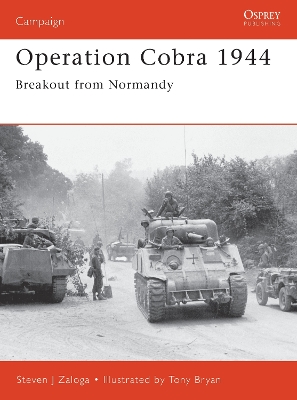Osprey Campaign S.
5 primary works
Book 42
On June 22, 1944, three years to the day after Germany's 1941 invasion of the Soviet Union, the Red Army launched a massive offensive in Byelorussia. Code named Operation Bagration, this campaign climaxed five weeks later with the Red Army at the gates of Warsaw. The Wehrmacht's Army Group Center was routed, a total of 17 Wehrmacht divisions were utterly destroyed, and over 50 other German divisions were shattered. It was the single most calamitous defeat of the German armed forces in World War II.
On June 22, 1944, three years to the day after Germany's 1941 invasion of the Soviet Union, the Red Army launched a massive offensive in Byelorussia. Code named Operation Bagration, this campaign climaxed five weeks later with the Red Army at the gates of Warsaw. The Wehrmacht's Army Group Center was routed, a total of 17 Wehrmacht divisions were utterly destroyed, and over 50 other German divisions were shattered. It was the single most calamitous defeat of the German armed forces in World War II.
In many respects Operation Bagration was the 1941 Operation Barbarossa invasion in reverse, fought over many of the same battlefields. The Wehrmacht's Army Group Center was routed, a total of 17 Wehrmacht divisions were utterly destroyed, and over 50 other German divisions were shattered. It was the single most calamitous defeat of the German armed forces in World War II, costing the Wehrmacht more men and material than the cataclysm at Stalingrad 16 months earlier. It was all the more catastrophic because it was timed to coincide with D-Day and the Allied liberation of France. This important Russian campaign is little appreciated in the West, overshadowed by the Normandy campaign.
Book 88
Book 104
The D-Day landings of June 6, 1944, were the largest amphibious military operation ever mounted. The greatest armada the world had ever seen was assembled to transport the Allied invasion force across the Channel and open the long-awaited second front against Hitler's Third Reich. Of the landings on the five assault beaches, Omaha Beach was the only one ever in doubt. Within moments of the first wave landing, a third of the assault troops were casualties. Yet by the end of D-Day, the Atlantic Wall had been breached and the U.S. Army's V Corps was firmly entrenched on French soil.
The D-Day landings of June 6, 1944, were the largest amphibious military operation ever mounted. The greatest armada the world had ever seen was assembled to transport the Allied invasion force across the Channel and open the long-awaited second front against Hitler's Third Reich. Of the landings on the five assault beaches, Omaha Beach was the only one ever in doubt. Within moments of the first wave landing a third of the assault troops were casualties. Yet by the end of D-Day the Atlantic Wall had been breached and the U.S. Army's V Corps was firmly entrenched on French soil.
The D-Day landings of June 6, 1944, were the largest amphibious military operation ever mounted. During the late spring and early summer of 1944, the roads and ports of southern England were thronged with the troops, vehicles, and ships of the invasion force. The greatest armada the world had ever seen had been assembled to transport U.S. 1st Army and British 2nd Army across the narrow strip of the Channel and open the long-awaited second front against Hitler's Third Reich. The events of this single day took four years of planning and organization and represented one of the most crucial moments of the entire Second World War. The landings were split into four sectors: two British/Canadian and two U.S. Omaha was the easternmost of the two U.S. beaches, and the plan was that the landing forces should rapidly link up with their fellow Americans to the west on Utah beach and the British further to the east on Gold Beach. Allied intelligence had missed and entire German division amongst the defenders at Omaha and things went badly wrong. The first wave of landings suffered heavy casualties, many of the tanks and engineers with special equipment to help the troops get off the beach were lost. The U.S. troops appeared pinned down on the beach and General Eisenhower even considered withdrawing them. However, in determined attacks the German strong points were overcome one by one. At Pointe du hoc, the U.S. Rangers had to scale vertical cliffs before making their assault. Eventually the German defenses were cracked, allowing the troops to begin to push inland.
Book 107
Book 115




